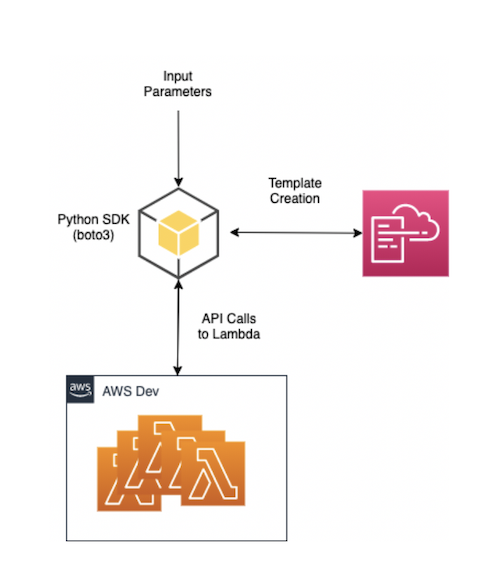AWS Cloud Operations & Migrations Blog
Tag: AWS Lambda
Deploying application configuration to serverless: Introducing the AWS AppConfig Lambda extension
At AWS, we feel strongly that separating application configuration from application code is a best practice. Being able to deploy configuration independently from code makes it possible to build services like Service Quotas and launch new services and features right as we announce them. If we didn’t separate these, even a simple configuration change would […]
Automate account creation and resource provisioning for AWS GovCloud(US), using AWS Service Catalog, AWS Organizations, and AWS Lambda
Public and private sector customers are now often working to automate their account creation and operations into the AWS GovCloud (US) Regions. These customers use the AWS GovCloud (US) Regions to access FedRamp certified services and ITAR-governed datasets for multiple accounts. Managing this type of multi-account enterprise footprint with AWS Organizations helps reduce operational costs […]
Send Organizational AWS Health Events to Amazon Chime or Slack
There’s now a much easier solution! Please see our blog post on AWS Health Aware – Customize AWS Health Alerts for Organizational and Personal AWS Accounts. Receiving notifications for AWS Health events can be done in multiple ways depending on your desired platform, from email notifications with Amazon SNS to account-specific chat notifications with AWS […]
Creating event-based notifications and remediation in AWS Service Catalog using AWS Config
AWS Service Catalog allows organizations to quickly let their users deploy approved IT services to organize, govern, and provision cloud resources on AWS. However, users launching multiple instances can cause issues because: Some instances are not always active. The lack of limits on the number of active instances can result in an organization’s costs going […]
Duplicating infrastructure on AWS
In large enterprise organizations, it’s challenging to maintain standardization across environments. This is especially true if these environments are provisioned in a self-service manner—and even more so when new users access these provisioning services. Once you have the resources deployed into an environment, it can be hard, or even impossible, to change it. In case […]
AWS CloudFormation: Signed, sealed, and deployed
State Street Corporation is a global bank that is responsible for managing over 10% of the world’s wealth. It also focuses on engineering better outcomes for its investors and customers, striving to bring innovative solutions to market and enhance customer value. To manage complexity and provide a stable agile platform, State Street uses Infrastructure as […]
Controlling your AWS costs by deleting unused Amazon EBS volumes
Customers across industries and verticals consider cost management as one of their top priorities. Limited visibility into a volume’s lifecycle can result in costs for unutilized resources. AWS builds cost-management products to access, organize, understand, control, and optimize costs on AWS. Unused and overlooked Amazon EBS volumes contribute to AWS costs. The lifecycle of EBS […]
Automating life-cycle management for ephemeral resources using AWS Service Catalog
Enterprises deploy AWS resources and services daily to support different business objectives. For example: A data scientist might like to create an EMR cluster for a job that should not take longer than one week. A sales engineer needs a demo environment for two days. A marketing application owner wants a marketing application to run […]
Understanding AWS Lambda behavior using Amazon CloudWatch Logs Insights
In this guest post, Alice Xiao, Data Analyst at financial services company State Street Corporation discusses how State Street built a framework using CloudWatch Logs Insights to support their innovation process of rapidly converting business ideas into client-centered applications. Introduction Customers want to do rapid prototyping and ensure critical defects are quickly resolved, so understanding […]
Tracking software licenses with AWS Service Catalog and AWS Step Functions
Enterprises have many business requirements for tracking how software product licenses are used in their organization for financial, governance, and compliance reasons. By tracking license usage, organizations can stay within budget, track expenditures, and avoid unplanned true-up bills from their vendors’ true-up processes. The goal is to track the usage licenses as resources are deployed. […]









